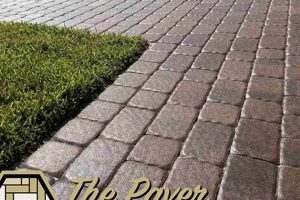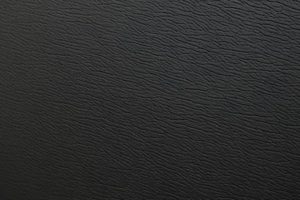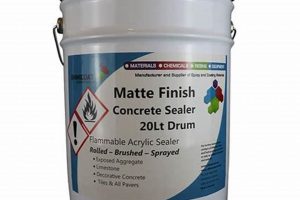A non-glossy coating applied to vehicle exteriors, this specialized product yields a low-luster, flat appearance, contrasting with the reflective quality of typical automotive paints. For example, a vehicle coated with this substance will absorb light rather than reflect it, resulting in a subdued, velvety visual effect.
The use of this coating offers a distinctive aesthetic that appeals to individuals seeking a unique vehicle appearance. Historically, achieving this look required specialized techniques, but advancements in paint technology have made it more accessible. The benefits extend to concealing minor surface imperfections, although proper care and maintenance are crucial to preserving its unique properties and preventing damage.
Subsequent sections will delve into the composition of these coatings, application methods, required maintenance procedures, and a comparison with alternative automotive paint finishes.
Essential Considerations for Preserving a Non-Reflective Automotive Coating
Maintaining a vehicle’s non-glossy coating requires specific practices to prevent damage and preserve its unique appearance. These recommendations are critical for owners seeking to maximize the lifespan and aesthetic appeal of this specialized finish.
Tip 1: Implement Hand Washing Procedures: Avoid automated car washes, as their abrasive brushes can induce scratches and mar the surface. Employ dedicated microfiber wash mitts and a pH-neutral soap formulated for automotive finishes.
Tip 2: Utilize Dedicated Cleaning Products: Standard detailing products designed for conventional glossy paints can compromise the finish. Select cleansers, waxes, and sealants specifically designed for matte surfaces to prevent unwanted shine.
Tip 3: Promptly Remove Contaminants: Address environmental contaminants such as bird droppings, tree sap, and insect remains immediately. Prolonged exposure can lead to etching and permanent staining of the coating.
Tip 4: Employ Appropriate Drying Techniques: Avoid air drying, which can leave water spots. Use a clean, dedicated microfiber drying towel or a forced-air dryer to remove water and prevent blemishes.
Tip 5: Consider Professional Application of Protective Films: Opt for a clear, matte-specific paint protection film (PPF) applied by a certified installer. This provides an additional layer of defense against scratches, road debris, and UV exposure.
Tip 6: Regularly Inspect the Finish: Conduct routine visual inspections to identify potential issues, such as swirl marks or fading. Addressing concerns early can prevent more extensive and costly repairs.
Tip 7: Avoid Abrasive Polishing Compounds: Traditional polishing compounds are designed to remove surface imperfections by abrading the clear coat. Their use will permanently alter the non-glossy properties of the coating, resulting in an uneven sheen.
Adherence to these guidelines will significantly contribute to the long-term preservation of the vehicle’s aesthetic qualities, ensuring that the unique character of the specialized coating is maintained.
The subsequent section will provide a detailed analysis of potential restoration techniques and professional detailing services for addressing specific challenges associated with this finish.
1. Unique appearance
The distinctive visual characteristic of this coating stems from its capacity to diffuse reflected light, as opposed to the specular reflection produced by conventional glossy finishes. This effect creates a non-reflective surface, offering a subdued, velvety look that deviates significantly from the standard automotive aesthetic. The demand for this visual distinction has driven advancements in paint technology and application methods. A notable example is the increasing adoption of this finish on high-performance vehicles and luxury automobiles, where it serves to enhance the vehicle’s aggressive or sophisticated styling. This preference highlights the importance of appearance as a key factor influencing consumer choice and automotive design trends.
The visual impact is not merely superficial; it affects perceived vehicle dimensions and form. Without the glare of reflected light, body lines and contours become more pronounced, emphasizing the vehicle’s design. Certain manufacturers offer limited-edition models with this type of finish as a means of increasing exclusivity and appeal. The practical significance of understanding this connection lies in tailoring maintenance procedures and product selection to preserve the desired visual qualities. Improper care can result in uneven sheen or irreversible damage, negating the intended aesthetic advantage.
In summary, the unique appearance is integral to the purpose and value of the coating. Its selection is driven by a desire for visual distinction, demanding specific maintenance practices to sustain its intended effect. Challenges include the potential for damage from improper cleaning and the need for specialized products. The pursuit of a non-reflective aesthetic underscores the evolving demands and priorities within the automotive industry.
2. Specialized chemistry
The attainment of a non-glossy surface on automotive exteriors hinges directly on the specialized chemical composition of the coating. Conventional automotive paints rely on a smooth, even surface to reflect light uniformly, creating a glossy appearance. Achieving a matte effect requires a deliberate disruption of this uniform reflection through specific chemical formulations.
- Pigment Selection and Distribution
The selection of pigments plays a crucial role. Unlike glossy paints, which often utilize fine, evenly dispersed pigments to create a smooth reflective surface, coatings designed for a matte finish employ pigments with controlled particle size and distribution. Larger pigment particles or deliberate clumping of pigments create microscopic surface irregularities. These irregularities scatter light, resulting in a diffused, non-reflective appearance. An example is the incorporation of silica-based matting agents, which introduce micro-roughness without compromising paint durability.
- Flattening Agents
Flattening agents, typically composed of inorganic materials like silica or organic waxes, are integral to the specialized chemistry. These agents are incorporated into the paint formulation to disrupt the smooth surface and reduce gloss. The type and concentration of the flattening agent directly influence the degree of matte achieved. A higher concentration typically results in a flatter finish. The chemical interaction between these agents and the resin system of the paint is critical for achieving a uniform and durable coating.
- Resin System Modification
The resin system, which binds the pigments and flattening agents together, also requires modification. Traditional automotive clear coats are designed to flow out smoothly during application, creating a level, reflective surface. Matte finishes often incorporate resins with higher viscosity or modified surface tension to prevent complete flow-out. This deliberate limitation preserves microscopic surface irregularities, contributing to the desired non-glossy effect. Example: Utilizing acrylic resins instead of urethane resins will affect the chemical properties of the paint as a whole, ultimately impact the matte effect.
- Additives for Durability and Protection
While achieving the desired aesthetic is paramount, the specialized chemistry must also address durability concerns. Matte finishes are often more susceptible to scratches and staining compared to glossy paints. Therefore, specialized additives, such as UV absorbers and scratch-resistant compounds, are incorporated to enhance the coating’s resistance to environmental factors and physical damage. These additives must be carefully selected to avoid compromising the matte appearance.
These facets of specialized chemistry are interconnected and crucial for creating effective coatings. The deliberate manipulation of pigment distribution, the incorporation of flattening agents, modification of the resin system, and the inclusion of protective additives are all essential for achieving the desired non-reflective aesthetic while maintaining adequate durability and protection. The successful implementation of these chemical strategies dictates the overall performance and longevity of the non-glossy coating.
3. Application technique
The attainment of a uniform and aesthetically pleasing automotive surface with a non-glossy coating is intrinsically linked to the employed application technique. Unlike conventional glossy finishes that exhibit a degree of self-leveling during the curing process, coatings require precise and consistent application methods to avoid visible imperfections. The cause-and-effect relationship is direct: deviations from optimal application parameters invariably result in uneven sheen, inconsistencies in color, or surface defects that compromise the desired visual outcome. The importance of application technique is further underscored by the fact that these coatings often lack the corrective properties inherent in traditional clear coats, making rework or repairs particularly challenging. For instance, inadequate surface preparation, such as incomplete removal of contaminants, can manifest as adhesion failures or variations in texture, negating the intended appearance.
The practical application of requires specific procedural adaptations compared to glossy paints. Spray gun settings, including air pressure and fan pattern, must be carefully calibrated to ensure uniform atomization and distribution of the coating. Overlapping spray passes must be executed with precision to prevent streaking or blotchiness. Environmental factors, such as temperature and humidity, also exert a significant influence on the curing process and final finish. An example of improper technique is the application of an excessively thick coat, which can lead to solvent entrapment and subsequent blistering or delamination. Conversely, insufficient film build can result in inadequate coverage and compromised durability. These factors highlight the necessity of skilled technicians with specialized training in applying these coatings.
In summary, the successful implementation of a non-glossy automotive finish hinges upon meticulous attention to application technique. Adherence to prescribed procedures, coupled with the skill and expertise of trained professionals, is paramount for achieving the desired aesthetic and ensuring the long-term integrity of the coating. Challenges persist in maintaining consistent results across varying environmental conditions and the complexity of application parameters. The linkage between technique and outcome reinforces the critical role of skilled application in realizing the full potential of specialized automotive coatings.
4. Maintenance needs
The unique aesthetic of a non-glossy automotive coating directly influences its maintenance requirements, creating a critical interdependency. The non-reflective surface, while visually appealing, is inherently more susceptible to exhibiting imperfections, such as swirl marks, staining, and marring, compared to conventional glossy finishes. The cause lies in the light-diffusing properties of the coating, which amplify the visibility of surface defects. Consequently, specialized maintenance procedures are necessitated to preserve the intended appearance. The importance of appropriate maintenance cannot be overstated; neglect or the use of improper cleaning methods can irreversibly damage the coating, negating its aesthetic value and requiring costly repairs. For example, the use of automated car washes, with their abrasive brushes, will induce scratches that are significantly more noticeable on a matte surface than on a glossy one.
The practical application of maintenance protocols for this coating requires a departure from standard automotive detailing practices. Traditional polishing compounds and waxes, designed to enhance reflectivity, are unsuitable and can impart an undesirable sheen. Instead, pH-neutral cleaning solutions, microfiber towels, and products specifically formulated for matte surfaces are essential. Regular hand washing is recommended to minimize the risk of swirl marks. Immediate removal of contaminants, such as bird droppings or tree sap, is crucial to prevent staining, as the porous nature of the coating makes it more prone to absorption. The application of a matte-specific paint protection film (PPF) can provide an additional layer of defense against environmental hazards and physical damage. Consider the example of a vehicle parked under a tree; sap deposits, if left unattended, can etch the surface of the coating, leaving permanent marks that cannot be easily removed.
In summary, the maintenance needs of a vehicle with a non-glossy finish are a direct consequence of its unique surface properties. The increased vulnerability to surface imperfections necessitates specialized cleaning products and techniques, regular attention, and proactive protection measures. While the aesthetic reward is significant, the challenges associated with maintaining this coating must be acknowledged and addressed to ensure its longevity and preserve its intended visual appeal. This knowledge is essential for both vehicle owners and detailing professionals to effectively manage and protect these specialized automotive finishes.
5. Scratch vulnerability
The inherent characteristics of surfaces render them significantly more susceptible to scratches compared to their glossy counterparts. This elevated susceptibility is a crucial consideration for owners and detailers alike, demanding specialized care protocols to preserve the integrity of the aesthetic.
- Surface Texture and Light Diffusion
Conventional glossy finishes possess a smooth, highly reflective surface that minimizes the visual impact of minor scratches by reflecting light uniformly. The uneven surface texture scatters light in multiple directions. This diffusion amplifies the visibility of even minor surface imperfections, rendering scratches more noticeable. A seemingly superficial abrasion on a glossy surface may be virtually undetectable, whereas the same abrasion on a surface will appear as a distinct blemish.
- Lack of Self-Healing Properties
Some modern automotive clear coats incorporate self-healing polymers that can mitigate minor scratches and swirl marks through the application of heat. These polymers flow to fill in the imperfections, restoring the smooth surface. Coatings lack this capacity. Once a scratch occurs, it remains visible until addressed through specialized, and often complex, repair procedures. This absence of self-healing necessitates a proactive approach to damage prevention.
- Challenges in Scratch Removal
Traditional scratch removal techniques, such as polishing with abrasive compounds, are designed to level the clear coat, thereby eliminating or reducing the visibility of scratches. However, these techniques are generally unsuitable for coatings. The use of abrasive compounds will alter the surface texture, imparting an unwanted sheen and compromising the finish. The delicate nature of the finish limits the available options for scratch repair, often requiring specialized products and techniques to minimize damage.
- Environmental Factors and Usage Patterns
Vehicles are exposed to a wide range of environmental factors that can contribute to scratching, including road debris, automated car washes, and improper washing techniques. Given the heightened susceptibility to scratches, these factors pose a greater threat to vehicles with this type of finish. Owners must exercise caution in selecting washing methods and protective measures to mitigate the risk of damage. Regular waxing will not help like tradition paint will help.
The interplay of these facets underscores the critical need for meticulous care and specialized maintenance to safeguard the integrity of coatings. The absence of self-healing properties and the challenges associated with scratch removal necessitate a proactive approach to damage prevention, emphasizing the importance of appropriate washing techniques, protective measures, and awareness of environmental hazards. While scratches are unavoidable, their management is paramount in preserving the aesthetic value of this particular automotive finish.
6. Durability concerns
Coatings, while aesthetically distinctive, present specific durability challenges that necessitate careful consideration and proactive management. These concerns stem from the unique properties of the finish and the absence of certain protective characteristics found in conventional glossy coatings.
- Environmental Resistance
Coatings exhibit reduced resistance to environmental factors such as UV radiation, acid rain, and industrial fallout. The light-diffusing surface is more susceptible to degradation from UV exposure, leading to fading and discoloration over time. Acid rain and industrial pollutants can etch the surface, leaving permanent blemishes. The protective clear coat often found on glossy finishes provides a barrier against these elements, a layer that is either absent or chemically modified in non-glossy applications. A vehicle regularly exposed to direct sunlight or industrial environments will experience accelerated degradation of its coating compared to a vehicle with a conventional finish.
- Scratch and Abrasion Resistance
As previously discussed, the finish is more vulnerable to scratches and abrasions. The absence of a smooth, reflective surface amplifies the visibility of even minor imperfections. The specialized chemistry employed to create the matte effect often compromises the hardness and flexibility of the coating, rendering it more prone to damage from everyday wear and tear. A simple act such as wiping down the surface with a non-microfiber cloth can introduce swirl marks that are readily apparent.
- Chemical Sensitivity
Coatings exhibit increased sensitivity to certain chemicals, including some cleaning agents, waxes, and sealants. The specialized composition of the finish can react adversely with these chemicals, leading to discoloration, streaking, or permanent damage. The use of improper cleaning products, such as those containing petroleum distillates or strong solvents, can strip away the protective properties of the coating, leaving it vulnerable to further degradation. The selection of appropriate cleaning and detailing products is critical to preserving the integrity of the finish.
- Repair Limitations
Repairing damaged area is more complex and limited compared to repairing traditional glossy finishes. The specialized application techniques and the difficulty in matching the exact texture and sheen make spot repairs challenging. In many cases, a complete panel repaint may be necessary to ensure a uniform appearance. This complexity increases the cost and inconvenience associated with repairing damage, making preventative maintenance even more crucial.
These durability concerns collectively underscore the need for proactive care and specialized maintenance protocols. While coatings offer a distinct aesthetic, their long-term performance hinges on understanding and addressing these vulnerabilities. Owners and detailers must prioritize preventative measures, such as the use of protective films, appropriate cleaning products, and careful handling, to maximize the lifespan and visual appeal of this specialized automotive finish.
Frequently Asked Questions Regarding Matte Finish Auto Paint
The following addresses common inquiries and misconceptions pertaining to specialized automotive coatings that produce a non-glossy appearance. These questions seek to provide clarity and informed guidance on selecting, maintaining, and preserving this unique finish.
Question 1: Is a matte finish more difficult to maintain than a glossy finish?
Yes, surfaces demand specialized care and maintenance protocols. Its susceptibility to scratches, staining, and swirl marks necessitates the use of pH-neutral cleaning products, microfiber towels, and dedicated detailing techniques. The absence of self-healing properties and the challenges associated with traditional scratch removal methods require a proactive approach to damage prevention.
Question 2: Can a matte finish be waxed or polished?
Traditional waxes and polishes designed for glossy paints are unsuitable for surfaces. These products often contain abrasive compounds that can alter the texture and impart an undesirable sheen. Specialized waxes and sealants specifically formulated for this finish may be used to provide protection without compromising the non-glossy appearance.
Question 3: Are there specific cleaning products recommended for matte finishes?
Yes, pH-neutral cleaning solutions are recommended for this. Avoid products containing petroleum distillates, solvents, or abrasive additives. Opt for dedicated cleaning products labeled as safe for matte finishes. These formulations are designed to remove dirt and contaminants without damaging the unique surface texture.
Question 4: Does paint protection film (PPF) work on matte finishes?
Yes, matte-specific PPF offers an effective means of protecting from scratches, stone chips, and environmental damage. The film is applied by a certified installer to maintain the non-glossy appearance. PPF provides a sacrificial layer that absorbs impact and prevents damage to the underlying coating.
Question 5: Is it more expensive than traditional paint?
Generally, surfaces tend to be more expensive than traditional glossy paints. The specialized formulations, application techniques, and increased maintenance requirements contribute to the higher overall cost. Repairing damage can also be more costly due to the complexity of matching the original finish.
Question 6: Can scratches be repaired?
Repairing scratches is more complex than on glossy finishes. Traditional polishing techniques are unsuitable. Minor scratches may be addressed with specialized touch-up paints designed for a surface, but achieving a seamless repair is challenging. Extensive damage may require panel repainting, necessitating skilled technicians and specialized techniques.
These frequently asked questions highlight the key considerations associated with. Understanding these facets is essential for informed decision-making and responsible ownership.
The following sections will delve into comparative analyses with alternative automotive paint finishes and present case studies illustrating real-world applications.
In Conclusion
This exploration has elucidated key aspects of coatings, encompassing its distinctive appearance, specialized chemistry, application techniques, maintenance requirements, and inherent vulnerabilities. The analysis underscores the importance of understanding the unique properties of this specialized automotive finish to ensure its longevity and preserve its aesthetic value. The demand for specialized knowledge, skill, and resources necessitates informed decision-making for both vehicle owners and detailing professionals.
Ultimately, the decision to adopt surfaces requires a thoughtful assessment of individual priorities and a commitment to adhering to prescribed care protocols. The future of this finish will depend on continued innovation in paint technology and the development of more robust and user-friendly maintenance solutions. The information disseminated herein serves as a foundational resource for navigating the complexities of coatings, promoting responsible practices, and mitigating potential challenges.




![Best Matte Finish Epoxy Floor Options: [Your City/Industry] Edition Best Final Touch: Elevate Your Projects with Professional Finishing Best Matte Finish Epoxy Floor Options: [Your City/Industry] Edition | Best Final Touch: Elevate Your Projects with Professional Finishing](https://bestfinaltouch.com/wp-content/uploads/2025/10/th-894-300x200.jpg)


